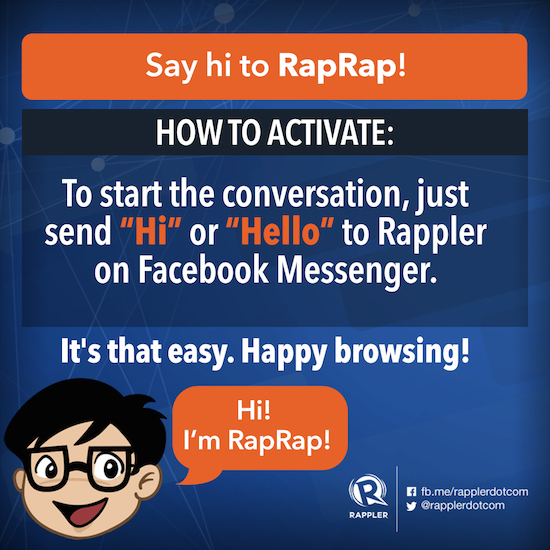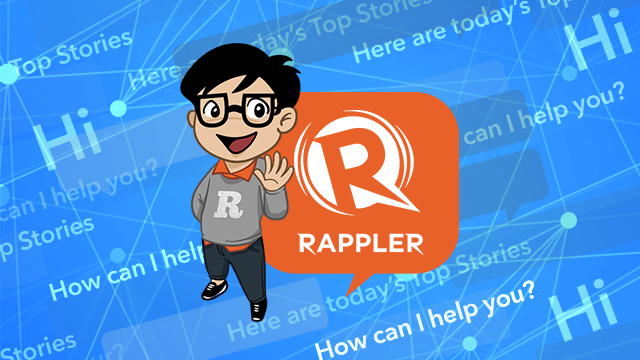How Chatbots and News Messaging Apps Are Changing Editorial and Commercial Innovation
In a 2015 blog post entitled “The Future of News is Not an Article,” Alexis Lloyd, the then creative director of the New York Times R&D Lab, envisaged a future that unlocked the potential of “Particles” instead of articles.
She pointed to Particles, “the potentially reusable pieces of information within an article,” as the way forward for news organizations to encode information in a more accessible, relevant, and long-lasting manner:
“The Particles approach…means that news organizations are not just creating the “first draft of history”, but are synthesizing the second draft at the same time, becoming a resource for knowledge and civic understanding in new and powerful ways.”
[s2If current_user_can(access_s2member_level0)]
Lloyd’s essential message was that organizations must transcend the limitations of the traditional news article—a relic of a relatively print-dominated era when storytelling had fewer platforms—in order to make the most of, and the most impact in, a digital media environment.
Based on this premise, the Reuters Institute for the Study of Journalism has recently published a report by media consultant Kevin Anderson entitled “Beyond the Article: Frontiers of Editorial and Commercial Innovation”. The report urges news organizations to think “beyond the article” in terms of “both the content they produce and the commercial revenue that supports their journalism.”
‘News as conversation’
Given the pressures surrounding existing business models for news, Anderson argues that editorial and commercial innovation must go hand in hand to propel journalism forward in a digital world. One of the key developments he sees at this intersection is the use of messaging apps and chatbots. These platforms are fuelling the shift to “news as conversation,” an approach that seeks to capitalize on mobile and messaging trends, build closer relationships with audiences, and generate new commercial opportunities.
The potential of a “news as conversation” approach has become increasingly apparent since usage of the big four messaging platforms—WhatsApp, WeChat, Viber, and Facebook Messenger—overtook the big four social media platforms—Facebook, Twitter, Instagram and Snapchat—in monthly active users throughout 2015 and 2016.
“Beyond the Article” covers three interesting case studies that harness this trend: the Facebook chatbots of social news network Rappler, the apps driving youth engagement with newspaper Helsingin Sanomat, and the conversational interface and notification system of the Quartz news app. The key findings of these case studies are highlighted below.
1. Helping people see the whole picture: Improving content discovery and crowdsourcing through Rappler’s Facebook chatbots
Aims
Rappler, a growing Philippines-based social news network, sought to overcome the content limitations of Facebook’s algorithms and newsfeed in a way that would better communicate its distinctive editorial voice and priorities.
“People are really seeing a lopsided view of what we are serving our public, and that has an impact on the quality of discourse,” Rappler’s head of research and content strategy, Gemma Bagayaua Mendoza, said in an interview with Anderson. “In the Philippines as in the United States, the echo chambers are really out there, and they are affecting how people respond to situations in current events. We would like to be able to have direct access to people so they see the whole picture.”
Methods
Rappler dedicated two developers to work on a Facebook chatbot called RapRap. Launched in July 2016, the chatbot is a conversational application that allows users to ask basic questions or enter keywords to see related stories from the Rappler site.


Rappler has also built a chatbot that assists people to contribute to its crowdsourced #NotOnMyWatch anti-corruption project. #NotOnMyWatch uses real-time data to show where and how corruption happens, a game-changing approach in a country where very few families who pay bribes actually report corruption.
Benefits and challenges
The first round of chatbot development was relatively quick and “the effort was fairly low,” according to Rappler’s then-CTO Nam Le. Despite this, spreading awareness about how users can interact with the bots remains important as technical developments unfold. The bots are expected to gradually recognize and respond to a greater variety of user requests and submissions.
The RapRap chatbot has helped Rappler to capitalize on a surge in Facebook activity amid declining Twitter usage in the Philippines. As the bot facilitates user discovery of the breadth and depth of Rappler content, the organization anticipates more story views and more advertising revenue. The sales team is exploring ways to make this happen.
Meanwhile, the chatbot for #NotOnMyWatch has benefited from crowdfunding and private-sector grants. By providing a convenient online reporting process, the bot is helping mobilize individuals and communities to supplant Facebook rants with actual reports of corruption. “This is something that we hope to carry into the next years. If we can make it work, it will make fighting corruption far more transparent,” said Rappler CEO and executive editor Maria Ressa at the Philippines Social Good Summit in 2016.
2. From a WhatsApp experiment to a custom-built app: Engaging youth audiences through chat at Helsingin Sanomat
Aims
Nyt (“Now”), the youth-oriented section of Finland’s largest newspaper, Helsingin Sanomat, wanted to grow its reach among 15- to 26-year-olds. Initial efforts to engage this age bracket on social media had plateaued, with Instagram and Facebook strategies proving less successful than expected. Consequently, the Nyt team sought a new strategy to effectively engage with the target audience, especially its youngest members.
Methods
Realizing that WhatsApp is used by around 80% of youth in Finland, Nyt launched a WhatsApp newsletter in autumn 2014. It first sent subscribers a few top stories, a small number of headlines, and a joke. Although the team didn’t heavily market the newsletter and only expected a few hundred early adopters, within a week 3,000 users had joined. Shortly afterwards, Nyt had to cap the number of users at 5,000.
The limitations of the WhatsApp platform soon became apparent. Faced with what news editor Jussi Pullinen called “a manual labor hell” of managing multiple distribution lists and precariously navigating the platform’s terms of use, the Nyt team decided to work with an external firm to develop a custom-built app that could mirror the conversational format of WhatsApp.
Benefits and challenges
Nyt’s WhatsApp experiment offered a useful learning curve that informed the design of the app. The Nyt team had been surprised at the intensity of interaction from young WhatsApp users who asked questions, sent audio and video files, and gave direct feedback about what they wanted more of and what Nyt should change.
“People who were from the Helsinki region really liked getting tips on new restaurants or bars or info on events on the town via chat,” said Pullinen, rather than having to “go and look that info up”. Chat therefore proved to be a convenient, social and user-friendly way for Nyt to engage a youth audience. As Pullinen explained in a post on Medium:
“All in all, it felt very personal and very natural to be a media brand and to chat.”
But there was a significant stumbling block: WhatsApp users were not clicking through to the website. Consequently, rather than relying on website traffic, the Nyt app is designed to drive revenue through partnerships with local businesses who provide coupons, contests, and sponsored content. Building these partnerships requires more work than selling ad banners, but Nyt’s data indicates that its young readers tend to block or ignore ads, yet they are relatively open to reading quality sponsored content.

The Nyt app now has many times more users than those on the WhatsApp newsletter. However, maintaining user engagement has been harder. “Our core audience is on WhatsApp all the time. When you have a separate app, you have a threshold there,” Pullinen said in an interview for “Beyond the Article.” Despite this setback, the Nyt app continues to unlock valuable insights into the brand’s youth audience, including their preferences for a distinct editorial voice, a short digest format, and direct, genuine interaction.
3. Playful, creative and condensed: Newsbites, notifications and the Quartz brand experience
Aims
Given that consumer use of notifications tripled in many countries from 2013 to 2016, digital business news outlet Quartz wanted to enter people’s mobile notification streams. It sought to achieve this in a way that would align with its three guiding principles: “provide global business news, respect readers’ time, and go where the readers are.”
Methods
After weighing up several contrasting ideas, from a minimal mobile experience with extensive notifications to a mobile version of the full Quartz website, Quartz decided instead on an app with a conversational interface. In an article about the launch of the Quartz news app for iPhone, Zachary M. Seward explained:
“We put aside existing notions about news apps and imagined what our journalism would be if it lived natively on your iPhone. It wouldn’t be a facsimile of our website. It would be something entirely different, with original writing, new features, and a fresh interface.”
Launched in February 2016, the Quartz app presents users with newsbites, where they can click on an emoji-filled icon to receive a story summary in live-chat style messages, or they can skip to the next story. Users can also choose from four types of notifications: basic news updates, important and interesting news, “really, really big news,” and the “markets haiku”.

Benefits and challenges
Quartz’s chat-based app is strikingly relevant for time-pressed audiences and Millennials. The app’s instant responses mimic the familiar format of texting, generating a comfortable, amusing vibe similar to chatting with a friend. Although the app does not at first understand an individual user’s news preferences, the decisions that users make about article choice and notifications provide Quartz with a wealth of customer data points, fuelling feedback loops that may be used to build more efficient and personalized customer experiences.

Some people may find the app a bit limiting because it chooses which news stories to reveal, one at a time. But in the view of Adam Pasick, push news editor for Quartz, this is precisely the app’s crucial differentiator: “We’re providing a very slim, curated view of things that we find interesting,” he told Anderson. “This is really a small snack size as far as reading the news goes.” In contrast to the Quartz website’s array of in-depth feature articles, the Quartz news app thrives on its brevity, epitomized in the cryptic and popular daily Markets Haiku.
To help monetize the app, Quartz places visual ads within the app’s update stream. This may seem counter-intuitive given consumer trends towards ad-blocking and ad resistance. Nonetheless, for many users, the overall experience of the app is likely to be positive, convenient and even delightful. According to Quartz creative director Brian Dell, the goal is “to match our user’s context, and build the best brand experiences for that in a Quartzy way.”
Convergence in the business case for news as “particles” of conversation
In the three case studies above, the alignment of clear editorial goals with technology and business outcomes has paved the way for innovation in how people understand, experience and engage with news. By converting news into “particles” of conversation, Rappler, Helsingin Sanomat, and Quartz are making information resonate with their readers in direct and convenient ways that could revitalize brand-to-consumer relationships.
Nonetheless, there are many challenges involved in making chat-based news successful and sustainable. Harnessing the rise of bots and messaging is only one trend involved in creating the future of news—a future increasingly being shaped by the synthesis of editorial and commercial aspirations.
Image sources: Rappler.com, fightcorruption.ph, Helsingin Sanomat via Medium.com, Quartz via BrentManke.com, and Quartz via Mike Wickett



